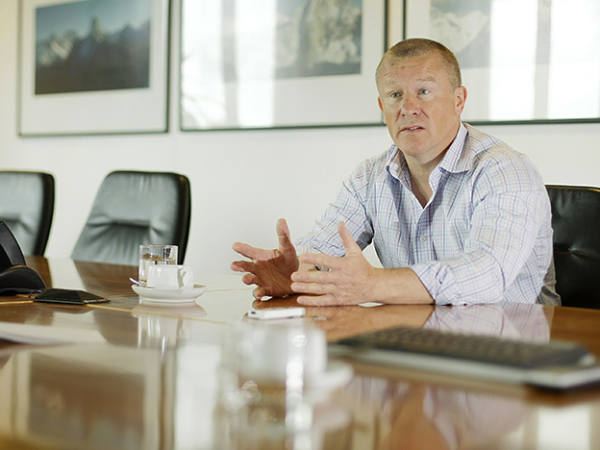If you have been seeking growth investments over the past 10 years, no doubt Asia and the emerging markets have been of great interest, as their growth prospects seem infinitely superior to those of developed markets. But you should not forget the US - at least smaller companies - or you could be forsaking some strong growth, argues Robert Siddles, fund manager of the F&C US Smaller Companies investment trust. The US, in fact, has the key drivers of long-term growth: a growing population, abundant natural resources, and innovation and leadership in technology.
"If you look back 10 years, the US was coming out of a golden age, China was emerging and investors were beginning to focus on the BRICs (Brazil, Russia, India and China)," says Dr Siddles. "However, a growing labour force and high birth rate, both driven by immigration from mainly Latin American countries, mean the US is not facing the same problems of an ageing population and a shrinking workforce that are currently worrying many economies. China may face a demographic cliff but the US will continue to do well."
An argument against investing in smaller companies in a country experiencing an economic downturn is that they are more exposed to their domestic economy than large-caps, which tend to be global multinationals and can benefit from global growth. "When I started in this business the argument was framed in this way, but it is slightly erroneous," retorts Dr Siddles. "Domestic companies have got a lot more global since the Berlin wall has come down. Many have international operations. Only 25 per cent of our portfolio, for example, is solely domestic."
Another criticism levelled at smaller companies is that they are high risk and volatile. But just because an asset class has those characteristics doesn't mean you can't manage them out of a portfolio. "Our belief is that investing in US smaller companies is very risky and the best way to achieve long-term out performance is a margin of safety approach," he says. "We do this by taking a long-term view and by seeking value. Value provides a safety margin because the share is already cheap."
Dr Siddles also favours taking a contrarian stance. "Looking to where others ignore is a great time saver and where you find value."
A very important part of his investment philosophy is to be risk averse, and he takes a conservative approach to stock selection. "Our 'good company' concept screens out risky stocks, because every stock we buy must pass the following hurdles," he says.
These are:
• A strong franchise – a clear edge over the competition;
• Free cash flow – capital is being used appropriately;
• Insider ownership – Dr Siddles likes management to have a stake in the business so they follow the right incentives;
• Customer concentration – Dr Siddles avoids businesses dominated by large customers; and
• Inexpensive valuation – the shares are out of favour with substantial upside potential.
These, he argues, help avoid the key risks of equity investment.
This leads to sectors such as insurance, which Dr Siddles says "can grow year in year out" and is at the defensive end of the financials sector. The trust's largest sector exposure is producer durables, and includes companies such as Quanta Services which provides infrastructure to companies in areas including electric power, renewable energy, natural gas and telecommunications.
Meanwhile consumer staples companies such as food producers Sanderson Farms and Flowers Foods feature in the top 10 holdings.
The success of this approach is evidenced by the way the trust mitigates massive falls during times of market turmoil - not something you expect with a smaller companies fund. During 2008, for example, as its sector peers made double-digit losses of between 33 and 45 per cent, F&C US Smaller Companies investment trust only went down 7.2 per cent.
The downside to this strategy is that in rallying markets the trust gets left behind because of its more conservative allocation, which happened over the year ended 30 June 2011. Energy, technology and materials stormed ahead, but financial services, consumer staples and utilities lagged. However, its lack of downside adds up to this trust's strong long-term cumulative returns so that it outpaces all its sector peers and benchmark, the Russell 2000 Index, over most periods.
The tide also appears to be turning again, with defensive sectors in the Russell 2000 outpacing cyclical ones during September as investors rotated into these areas.
Floating ahead
Another argument in favour of US smaller companies is inflation. High-growth investments are necessary to beat this, and ones which will do well during inflationary periods rather than suffer from it. US smaller companies are an asset in question, according to Dr Siddles, as US inflation risk continues to rise with the government deficit growing, low interest rates and commodity price pressures.
"This is a controversial view and many strategists think the opposite," he says. "But US smaller companies have historically performed best in inflationary times such as the 1940s or 1970s, as they gained increased pricing power under the umbrella of generally rising prices. The key is that smaller companies are geared to growth, and nominal growth is quite fast in inflationary times."
Also see our fund tip.










